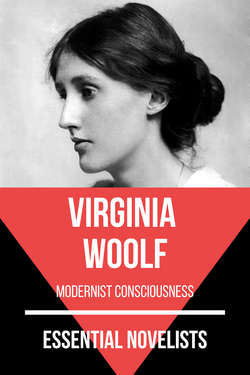Читать книгу Essential Novelists - Virginia Woolf - Вирджиния Вулф, Virginia Woolf - Страница 3
ОглавлениеAuthor
BORN ON JANUARY 25, 1882, Adeline Virginia Stephen was raised in a remarkable household. Her father, Sir Leslie Stephen, was a historian and author, as well as one of the most prominent figures in the golden age of mountaineering. Woolf’s mother, Julia Prinsep Stephen, had been born in India and later served as a model for several Pre-Raphaelite painters.
As a young girl, Virginia was curious, light-hearted and playful. She started a family newspaper, the Hyde Park Gate News, to document her family’s humorous anecdotes. However, early traumas darkened her childhood, including being sexually abused by her half-brothers George and Gerald Duckworth, which she wrote about in her essays A Sketch of the Past and 22 Hyde Park Gate. In 1895, at the age of 13, she also had to cope with the sudden death of her mother from rheumatic fever, which led to her first mental breakdown, and the loss of her half-sister Stella, who had become the head of the household, two years later.
In 1905, she began writing professionally as a contributor for The Times Literary Supplement. Virginia met several members of the Bloomsbury Group, a circle of intellectuals and artists including the art critic Clive Bell, the novelist E.M. Forster, the painter Duncan Grant, the biographer Lytton Strachey, economist John Maynard Keynes and essayist Leonard Woolf. The group became famous in 1910 for the Dreadnought Hoax, a practical joke in which members of the group dressed up as a delegation of Ethiopian royals, including Virginia disguised as a bearded man, and successfully persuaded the English Royal Navy to show them their warship, the HMS Dreadnought. After the outrageous act, Leonard Woolf and Virginia became closer, and eventually they were married on August 10, 1912.
A year after the end of World War I, the Woolfs purchased Monk's House, a cottage in the village of Rodmell in 1919, and that same year Virginia published Night and Day, a novel set in Edwardian England. Her third novel Jacob's Room was published by Hogarth in 1922.
In 1925, Woolf received rave reviews for Mrs. Dalloway, her fourth novel. The mesmerizing story interweaved interior monologues and raised issues of feminism, mental illness and homosexuality in post-World War I England.
Unable to cope with her despair, Woolf pulled on her overcoat, filled its pockets with stones and walked into the River Ouse on March 28, 1941. As she waded into the water, the stream took her with it. The authorities found her body three weeks later. Leonard Woolf had her cremated and her remains were scattered at their home, Monk's House.
Although her popularity decreased after World War II, Woolf's work resonated again with a new generation of readers during the feminist movement of the 1970s. Woolf remains one of the most influential authors of the 21st century.
